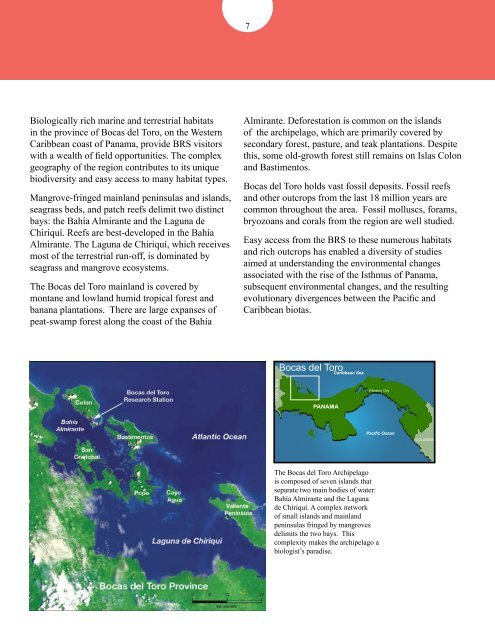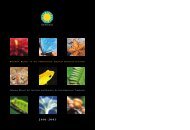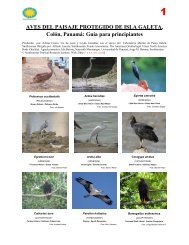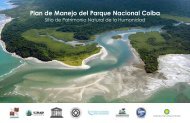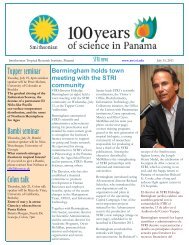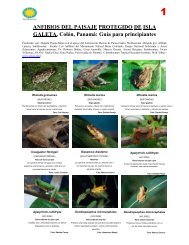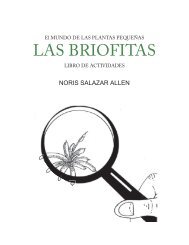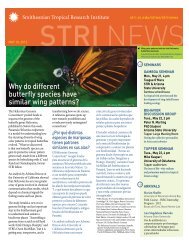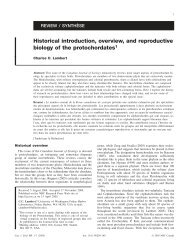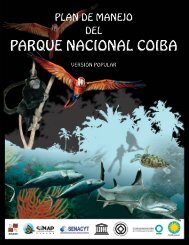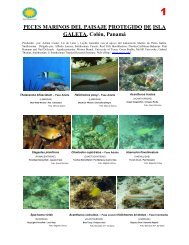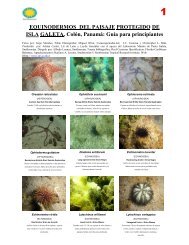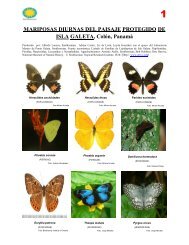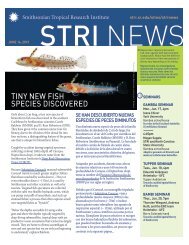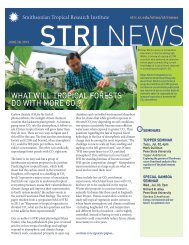Bocas del Toro Research Station - Smithsonian Tropical Research ...
Bocas del Toro Research Station - Smithsonian Tropical Research ...
Bocas del Toro Research Station - Smithsonian Tropical Research ...
You also want an ePaper? Increase the reach of your titles
YUMPU automatically turns print PDFs into web optimized ePapers that Google loves.
Biologically rich marine and terrestrial habitats<br />
in the province of <strong>Bocas</strong> <strong>del</strong> <strong>Toro</strong>, on the Western<br />
Caribbean coast of Panama, provide BRS visitors<br />
with a wealth of field opportunities. The complex<br />
geography of the region contributes to its unique<br />
biodiversity and easy access to many habitat types.<br />
Mangrove-fringed mainland peninsulas and islands,<br />
seagrass beds, and patch reefs <strong>del</strong>imit two distinct<br />
bays: the Bahía Almirante and the Laguna de<br />
Chiriquí. Reefs are best-developed in the Bahía<br />
Almirante. The Laguna de Chiriquí, which receives<br />
most of the terrestrial run-off, is dominated by<br />
seagrass and mangrove ecosystems.<br />
The <strong>Bocas</strong> <strong>del</strong> <strong>Toro</strong> mainland is covered by<br />
montane and lowland humid tropical forest and<br />
banana plantations. There are large expanses of<br />
peat-swamp forest along the coast of the Bahía<br />
7<br />
Almirante. Deforestation is common on the islands<br />
of the archipelago, which are primarily covered by<br />
secondary forest, pasture, and teak plantations. Despite<br />
this, some old-growth forest still remains on Islas Colon<br />
and Bastimentos.<br />
<strong>Bocas</strong> <strong>del</strong> <strong>Toro</strong> holds vast fossil deposits. Fossil reefs<br />
and other outcrops from the last 18 million years are<br />
common throughout the area. Fossil molluscs, forams,<br />
bryozoans and corals from the region are well studied.<br />
Easy access from the BRS to these numerous habitats<br />
and rich outcrops has enabled a diversity of studies<br />
aimed at understanding the environmental changes<br />
associated with the rise of the Isthmus of Panama,<br />
subsequent environmental changes, and the resulting<br />
evolutionary divergences between the Pacific and<br />
Caribbean biotas.<br />
COSTA RICA<br />
<strong>Bocas</strong> <strong>del</strong> <strong>Toro</strong><br />
PANAMA<br />
Caribbean Sea<br />
Panama City<br />
Pacific Ocean<br />
The <strong>Bocas</strong> <strong>del</strong> <strong>Toro</strong> Archipelago<br />
is composed of seven islands that<br />
separate two main bodies of water:<br />
Bahía Almirante and the Laguna<br />
de Chiriquí. A complex network<br />
of small islands and mainland<br />
peninsulas fringed by mangroves<br />
<strong>del</strong>imits the two bays. This<br />
complexity makes the archipelago a<br />
biologist’s paradise.<br />
COLOMBIA


